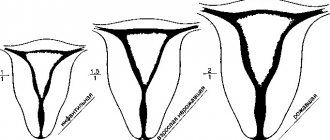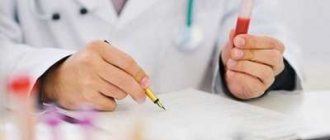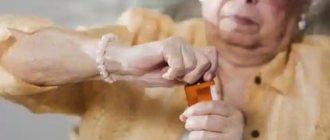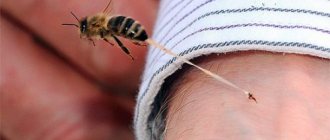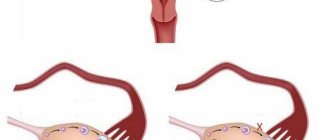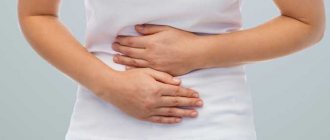Let's start with the fact that such a diagnosis under no circumstances can be based on the results of a single examination. Such doctor’s conclusions are fraught with an absolutely useless course of treatment, and prescribed drugs to stimulate ovulation can cause enormous harm to the female body if taken unnecessarily. Remember that before you think about treatment, you need to conduct an ultrasound examination during at least three cycles, and only then think about methods to combat so-called anovulation.
When it comes to the ovaries, where full-fledged eggs ready for fertilization do not mature, any doctor first thinks about the rationale for using hormonal drugs. The list of drugs used to stimulate ovulation is huge, so suitable treatment is prescribed on an individual basis. However, there are a number of the most common drugs that we will now consider.
Conservative treatment by an endocrinologist
With PCOS, tissue sensitivity to insulin decreases, which is characteristic of type II diabetes. To increase the sensitivity of cells to insulin, metformin (MF) is prescribed.
The drug normalizes carbohydrate metabolism, reduces the production of male sexual hormones, and stabilizes ovarian function. Taking into account the individual characteristics of the body, any methods of contraception are possible.
The goal of conservative treatment of PCOS is to restore the ovulatory menstrual cycle, eliminating the causes of infertility in women.
Reviews about ovulation stimulation
As mentioned above, the initial result of ovulation stimulation varies depending on the individual hormonal background of the woman. So, based on reviews about ovulation stimulation found on the forums of expectant mothers, we can draw the following conclusions:
- After each cycle of stimulation, the cysts increase significantly in size, and the last cycle, after which pregnancy occurs, is usually the third.
- Clostilbegit really helps only in isolated cases, and, as a rule, after its use it will be necessary to resort to additional drugs to enhance or consolidate the effect. There will be no benefit from its constant use, therefore, if after the second cycle there are no visible changes, you should switch to another drug, or to another method of stimulating ovulation.
Many reviews say that cheap drugs, which is not surprising, do not bring any effect at all.
Pregnancy after stimulation of ovulation proceeds easily, without any special toxicosis. The only caveat is constant medical supervision.
How to normalize the menstrual cycle?
To prevent the progression of the disease, combined oral contraceptives (COCs) are used. The drugs contain antiandrogens. They reduce the production of male sex hormones, which causes ovulation and the possibility of pregnancy.
If the COC course is completed and the ovulatory function is not normalized, hormonal drugs are prescribed to stimulate ovulation with a gradual increase in dosage. Additionally, drugs with an antiandrogenic effect (cyproterone acetate, spironolactone) can be used.
Patients note a decrease in skin oiliness and acne, and the intensity of hair growth increases. As an addition to drug therapy for hirsutism, it is recommended to use cosmetic methods for removing unwanted hair, for example, photoepilation.
Stimulation of ovulation using folk remedies
Often, even the most experienced doctors cannot determine the causes of prolonged female infertility, which means that hopes for prescribing an optimal course of treatment are also thrown into the trash. In such cases, desperate women often resort to “grandmother’s” advice, and, as it turns out, for good reason. Some folk remedies for stimulating ovulation have confirmed their effectiveness after a number of successful pregnancies of women practicing certain methods, therefore, we will not ignore them either.
It should be taken into account that herbal medicine cannot under any circumstances be combined with the use of conventional hormonal drugs. Otherwise, a woman’s hormonal levels risk being disrupted, and further drug treatment for infertility will not bring any results. Moreover, before using folk remedies to stimulate ovulation, a woman should carefully study the compatibility of herbs and infusions with her body, and prevent incompatibility of herbal remedies with factors of her own body. For example, if you have polycystic ovary syndrome, the use of sage is strictly prohibited, etc. It is highly recommended that you consult your doctor before planning your own course of treatment.
Returning to sage, it is impossible not to mention that it is considered the most effective folk remedy for stimulating ovulation, since it contains a large amount of estrogen-like substances, and, therefore, works on the same principle as a drug, just in a slower mode. The healing decoction consists of 1 tbsp. l. sage, poured with hot water, after which it needs to brew for about half an hour. This decoction is taken for ten days, starting from the fifth day of the first phase of the menstrual cycle. The course is most effective if repeated over three months.
Rose petals, surprisingly, are used not only as an aphrodisiac extract, but also as a means to stimulate ovulation. They contain a large amount of vitamin E, which, in turn, is necessary for the normal functioning of the ovaries. So, 1 tbsp. petals, poured into a glass of hot water, boiled in a water bath for several minutes, infused for about an hour, filtered, and consumed for several months in a small sip every night.
A common method of stimulating ovulation is also a diet in which it is advised to add foods containing phytoestrogens to the diet. These include carrots, beets, apples, full-fat milk, pineapples, spinach, sesame seeds and dates.
The course of pregnancy in women with PCOS
Patients with PCOS are at risk during pregnancy with unfavorable factors. Quitting smoking, changing your work and rest schedule, switching to proper nutrition are the main aspects of pregnancy planning.
When pregnancy occurs naturally, the risk of miscarriage is minimal and does not depend on the degree of obesity. After ovulation induction, the risk of miscarriage increases and is comparable to other forms of infertility treatment.
Against the background of PCOS, pregnant women are at risk of developing gestational diabetes and hypertension, which can subsequently negatively affect the health of the newborn. To exclude these factors, observation by an obstetrician-gynecologist and endocrinologist is recommended.
Ovulation after stimulation
Every woman’s body reacts differently to different external influences. Thus, successful ovulation after stimulation occurs the first time in only 20% of women, the second - in 5%, and the third - in 3%. In the intervals between stimulations, 6% of women manage to become pregnant, and another 6% falls on women who have had more than three stimulations, which, by the way, is not particularly recommended. In 60% of women, pregnancy does not occur even after intense stimulation of ovulation.
In the case of a successful pregnancy after ovulation stimulation, the woman needs to be under close medical supervision during the first few months, since at this time the risk of miscarriage is significantly increased. Moreover, in order to avoid fetal hypoxia, the woman will have to periodically undergo blood tests to determine the level of hormones in her blood. A full medical examination should also become part of the routine of the expectant mother - after ovulation is stimulated, the factors that negatively affect the course of pregnancy become much greater than during a natural pregnancy.
What to do if after 3-6 months of treatment there is no ovulation?
If hormonal therapy does not have the desired effect, surgical intervention is required, in particular laparoscopy:
- decortication of the ovaries - the follicles are pierced with a needle;
- endothermocoagulation – targeted cauterization of the ovaries.
After laparoscopy, 50% of patients require ovulation induction. If there is no ovulation within 12 weeks, clomiphene citrate is prescribed. Another 6 months have passed and there is no result? The use of gonadotropins is recommended.
Treatment. How to grow the endometrium?
The first thing you need to do is change your lifestyle a little. Exercise daily - it increases blood flow in the uterus and helps build up the mucous membrane. Even a little physical activity (running, abdominal exercises, swimming) for half an hour helps improve the situation. If your work requires you to sit for long periods of time, try to get up and walk around for 3-5 minutes per hour.
Pay attention to your sleep - it should last at least 7-8 hours a day. The fact is that the balance of estrogen and progesterone is restored during sleep. Go to bed and get up at the same time, around 10-11 pm. Do not watch TV or read books in bed - the bedroom should be associated only with sleep. Develop certain habits that will help you fall asleep. This could be a warm shower, a massage session and other unique rituals. It is best to fall asleep in a cool and dark room.
Try to reduce the level of psycho-emotional stress. Chemicals produced during stress increase blood vessel tone and disrupt hormonal balance. As a result, blood flow in the uterus worsens and the endometrium becomes thinner. If it is impossible to completely get rid of stress, try to reconsider your attitude towards it, use various relaxation methods, for example, yoga, aromatherapy. This will help improve health and grow the endometrium.
Change your diet. Our diet significantly affects the possibility of conception. Increase the amount of whole grains, fresh vegetables and fruits, especially those rich in vitamin C, lean meats and fish. Limit or eliminate your intake of trans fats and processed foods as much as possible. Strictly dose the amount of simple carbohydrates, and you can build up the mucous membrane. Take herbal supplements. Unfortunately, herbal preparations currently do not have an evidence base. Nevertheless, many doctors advise their patients to take dietary supplements that promote the production of estrogen. You should consult your healthcare professional before taking dietary supplements. He will select the most effective means.
Increase vitamin E in your diet. The second name of the substance is tocopherol, or fertility vitamin. You can find it in various types of nuts, raw pumpkin, sunflower and sesame seeds, chard, spinach, mustard greens, parsley, avocado, olives, and almost all vegetable oils. The dose of tocopherol and duration of use should be obtained from your doctor.
To build up the endometrium, undergo an acupuncture session. Here it is important to choose the right specialist who is well versed in the localization of biologically active points responsible for blood flow. Acupuncture helps dilate blood vessels and improve blood supply to the uterus. As with taking dietary supplements, you should consult your doctor before undergoing acupuncture.
Avoid anything that negatively affects the condition of blood vessels:
- quit smoking;
- limit caffeine intake;
- anticongestants - vasoconstrictors, antiallergic.
See your doctor. Even if you have regular menstruation, but conception does not occur, this is a reason to visit a gynecologist. Infertility has many causes. The doctor will help determine exactly what your problem is and prescribe treatment.
Most likely, the doctor will recommend hormone therapy using estrogen. This could be a tablet, hormonal patch, gel, cream or spray. Treatment with estrogens is contraindicated in the presence of malignant diseases, an increased tendency to form blood clots, or drug intolerance. If you have one of these diseases or are allergic to any medications, be sure to tell your doctor before starting treatment. With your doctor's permission, take vasodilators. To grow the endometrium, you need to supply it with oxygen and nutrients. For this purpose, the doctor will recommend vasodilators. They improve blood flow in the uterus and promote endometrial growth. If you have symptoms of uterine endometrial depletion and are planning to have children, consult your doctor immediately.
Overview of therapy methods
There is no one-size-fits-all approach to treating uterine fibroids. The therapy program is developed individually for each patient. The doctor will take into account the presence of specific symptoms and contraindications to surgery. If one small uterine fibroid is detected, the specialist will suggest following the watchful waiting method. The patient will have to visit the gynecologist 2-3 times a year, and if characteristic symptoms occur, undergo an unscheduled ultrasound. Most small fibroids do not interfere with normal conception and gestation and tend to disappear spontaneously, especially with a sharp drop in the level of reproductive hormones.
Permitted and prohibited products
If the doctor has not given permission to take synthetic supplements and use traditional recipes, you need to make changes to your diet. Certain foods can speed up the process of reducing the size of the tumor. The basis of the diet for fibroids should be:
- fatty fish: salmon, mackerel, tuna;
- red berries;
- green vegetables;
- leaf salads;
- citrus fruits (especially lemons and limes).
If you plan to treat myomatosis without surgery, especially with medication, it is necessary to exclude estrogen-containing products from the menu. The hormone stimulates the development of the mucous membrane lining the uterus. Too much estrogen obtained from the daily menu can negate the effect of medications and provoke the growth of fibroids. It is worth excluding from the diet:
- soy products;
- flax seeds, sesame seeds;
- walnuts, peanuts, almonds;
- red meat;
- animal fats;
- dried fruits.
Proper nutrition will contribute to treatment and speed up the healing process.
Types of fibroids
Large benign tumors can grow in any part of the uterus. The choice of the optimal method of therapy and the intensity of developing symptoms depend on the location of the tumor.
- Features of intramural fibroids.
The tumors are limited to the muscular wall of the uterus, but can grow to the size of a watermelon. A woman may complain of heavy menstruation, pain in the pelvis and lower back, and frequent urination. In the later stages of the disease, the patient develops a large swollen abdomen.
- Differences between submucosal fibroids.
The tumor grows in the uterine cavity, on the surface of the mucous membrane. With timely treatment, pathological tissues can be released along with menstrual blood. Large submucosal tumors do not leave room for the attachment of the fertilized egg and provoke mechanical infertility.
- Features of subserous fibroids.
Neoplasms grow on the uterus, from the outside. Subserous tumors can put pressure on the bladder or intestines, causing bloating and cramping pain.
With timely treatment, neoplasms will not be able to provoke serious consequences, such as infertility or heavy bleeding.
Useful properties of the red brush
Rhodiola tetramer contains many useful substances: essential oil, organic acids, tannins, vitamins and microelements, sugars, flavonoids, anthocyanins and glycosides.
The mutual action of all these components contributes to:
- — elimination of hormonal imbalance associated with dysfunction of the adrenal glands, thyroid and gonads
- - restoration of the menstrual cycle
- — elimination of inflammatory processes caused by fungal, bacterial and viral infections
- - cleansing the body of toxins and wastes
- - normalization of metabolism
- - increase in hemoglobin
- - strengthening immunity
- — improving performance
- - relieving vascular spasms
- - reducing the risk of cancer
- increasing the body's endurance
- increase potency
In addition, the red brush is very calming and improves sleep.
Traditional healers use the plant to treat:
various menstrual cycle disorders- female and male infertility
- mastopathy
- fibroids
- cervical erosion
- adnexitis
- endometrial polyps
- endometriosis
- ovarian cysts
- polycystic ovary syndrome
- ureaplasmosis
- gardnerellosis
- thrush
- vulvovaginitis
- colpitis
- dysbacteriosis of the vagina
- severe symptoms of menopause
- anemia
- liver and kidney diseases
- adrenal diseases
- cystitis
- epilepsy
- prostatitis
- prostate adenoma
However, not everyone is allowed to use infusions and decoctions of red brush. Thus, ingestion of the plant is strictly contraindicated :
- during pregnancy and breastfeeding
- for high blood pressure
- when taking synthetic as well as natural hormonal drugs (licorice, clover, hops, etc.)
- during menstruation
- for heart problems
- for individual intolerance
- for allergic reactions

